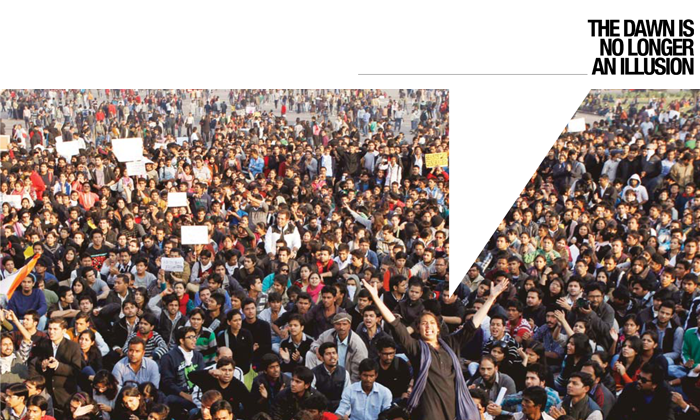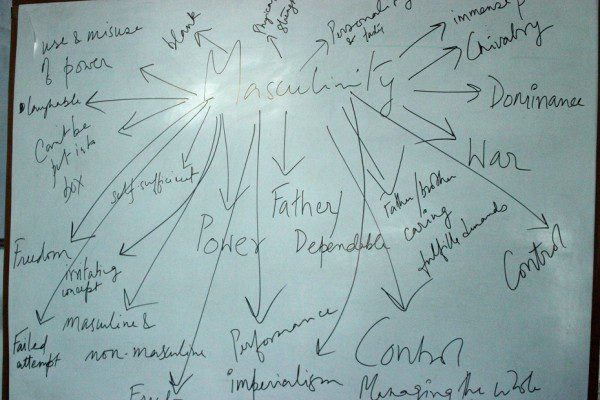When we were students, the great journalist Sham Lal used to write that amazing column, ‘Life and Letters’ in The Times of India. Every time his column would appear, we would quickly check out which new books he had reconstructed (or deconstructed!?) in his inimitable style – with a profound sense of scholarship, rigour and lucidity, not so rare among editors those days, and almost completely absent in the rather unrefined and crude, contemporary corporate era of match-fixing, paid news, organised pimping and illiteracy. Sham Lal was a quintessentially fountain pen scholar-journalist with deep rooted values, simplicity, integrity and intellectual refinement as a cultural characteristic: Raymond Williams would have called it a ‘Way of Life’. For John Berger, it would mark one of the ‘Ways of Seeing’.
“Remember Albert Camus’s ‘war journal’ Combat, where he wrote with such luminescence that cinematic writing was born. Or Jean Paul Sartre’s breaking all barriers of freedom and unfreedom – Liberation! Even Gabriel Garcia Marquez started a journal: whatever happened to that?”
He apparently fell out with ‘brand’ TOI later, during those uncanny days of (“no sob stories please, upwardly mobile classes are in a mood to celebrate/splurge, and a newspaper is as good as a tooth-paste”) paradigm shift in English journalism in India. Somehow, the same column in The Telegraph of Calcutta did not seem to take off with as much ‘popularity’, despite presumably a ready-made audience with an academic and aesthetic bent of mind in allegedly ‘intellectually superior’ Bengal. Perhaps, ‘branding’ has its singular inverse, perverse, reverse logic.
However, that did not deaden our urge to look for his columns in the Calcutta paper in the JNU library. Indeed, while walking across Hauz Khas in South Delhi to Siri Fort to watch films, we would almost always glance with a certain sense of lack and awe at the nameplate of Sham Lal as we crossed his pleasant, leafy, flowered brick house on the way at Gulmohar Park: there lives the thin, thinking man who has all the finest new books in the world!
Later, I was lucky to see his book shelves, stretching across a huge hall, wall to wall, like a historic monument of labour, knowledge and love, nurtured and nourished with the softness and care of a beloved. Some of them spilled onto the parlour with big windows and a huge tree outside where her daughter, a veteran journalist, now lives; and it was always a subdued exclamation which marked my mind. Oh, this book on the Frankfurt School, that book on Culture and Orientalism, or, on Anarchism, another on Herbert Marcuse and Walter Benjamin – I have read them all!
Subdued blasts from the past, like all the books still unopened, and unread. Like images floating in a dream, disconnected, opening up new maps of emotions, learning and memories; like the smell of trees and bark and wooden darkness inside pages, with a vermillion petal still hiding its colours, its forgotten fragrance becoming white space and smudged text and the corner of the page slightly upturned as a marker. You touch a book, and a life of letters reopens, including unopened letters; or postcards written upside down like inscriptions and manuscripts looking for a cold, damp, dustless archive.
I remember this folk tale because Sham Lal started Biblio and I know a story. Biblio was always a classy book review tabloid-journal, and for book lovers in India, it is still some kind of a Bible, though it’s not really a hot best-seller in the commercial down town markets of metropolis India flooded with glossies with half-naked celebrities on the cover, selling beautiful ‘homes’ and exotic weddings. A young editor of Biblio, apparently said that she was disappointed that it does not sell ‘more’. Sham Lal simply smiled and recounted a story: “TS Eliot once brought out a magazine, and do you know how many it sold? Only 18 copies. But that did not stop him.”
True, if small is beautiful, then why worry? Just 18, or 1800, or 18,000: does it really matter, when the scaffolding is already luminescent with the originality of offbeat brilliance? Maybe it does. But then, you have to pay a price for being non-conformist, for walking zigzag on unwalked, untalked, lanes, for flying on a magical desire-carpet, for defying the gigantic machines of relentless conformity, mediocrity and status quo. You dig the ground, you keep digging, and you will know finally that in the beginning was the word, and the tree which you water with your soul and sweat, which was not even a revelation of life, has now become a young tree of life. Remember Tarkovsky’s Sacrifice?
Remember Albert Camus’s ‘war journal’ Combat, where he wrote with such luminescence that cinematic writing was born. Or Jean Paul Sartre’s breaking all barriers of freedom and unfreedom – Liberation! Even Gabriel Garcia Marquez started a journal: whatever happened to that?
During the freedom movement in India, almost every freedom fighter and revolutionary founded a newspaper, journal or magazine, some arrived and went like a short-lived butterfly, others were banned or charged with sedition, while writers, poets and editors were jailed. Like great poets Faiz and Habib Jalib under the military dictatorship of post-independence Pakistan. Like Seema Azad in the market fundamentalist dictatorship of post-liberalised India. Even she was the editor of a journal: Dastak: The Knock.
Knock knock. Even Saroj Dutta, Naxalite revolutionary, killed in the early hours by the cops in a fake encounter – during those bloody days of slaughter and witch-hunt in the rebellious Calcutta of the seventies, his murder apparently witnessed by legendary Bengali actor Uttam Kumar himself – even Dutta used to bring out a journal. So did ‘pre-Marxists’ Marx and Engels in Germany, as did Gandhi and underground revolutionaries in British India.
Remember Samar Sen’s Frontier from Calcutta? A thin journal in cheap newsprint with a sad font for just one rupee! And no corporate backing or dubious packages! And yet, we, eternal eclectics, would never throw it away, every copy of Frontier would be preserved like the collected volumes of Karl Marx, with its every article published as a matter of pride for both the author and the reader.
So Frontier too disappeared. But those who break the thresholds, they never really disappear – they come back, like a dream sequence of opened and unopened ideas, books, images, text, white spaces, the smell of wood, bark, leaves, newsprint. The effervescence remains; of the infinite adventure of ideas, struggles, resistance. The Great Leap Forward: the leap of imagination.
That is why, Frontier is back, as humble as ever, one of the finest in town, and across the political landscape of original, non-conformist thinking, yet again building scaffoldings, challenging the status quo, redefining the world outside the ossified stagnations and comfort zones of corrupt mediocrity and pro-establishment journalism. Celebrating new, eclectic frontiers of new minds.
If you ask me, these are not the margins. This is the mainstream of mainstream. This is the alternative of alternatives. The scaffolding of scaffoldings. This is like Gabriel Garcia Marquez becoming reporter, while he was still healthy and mobile, following pop-icon Shakira, documenting her life and times, her aesthetics and politics. She was still too young, but a star was already born. This article is evidence that what finally moves into the great celebration that can be journalism is authentic even today. Marquez wrote in The Guardian on June 8, 2002, (which I reproduced on the edit page of Hindustan Times):
“….Despite her phenomenal musical talent and marketing savvy, Shakira wouldn’t be where she is today without her extraordinary maturity. It’s hard to understand how such tremendous creative energy can be present in a girl who changes her hair colour every day: black yesterday, red today, green tomorrow. Already she has more awards, trophies and honorary degrees than many elderly divas. You can tell she’s exactly where she wants to be: intelligent, insecure, demure, sweet, evasive, intense. Even at the top of her profession, she’s just a girl from Barranquilla; wherever she is, she’ll long for mullet roe and manioc bread. She hasn’t yet managed to buy her dream home, a quiet hideaway on the beach, complete with high ceilings and two horses. She loves books, she buys them and cherishes them, but she doesn’t have as much time to read them as she’d like. She misses the friends she leaves behind after the hurried airport goodbyes, but she knows it won’t be easy to see them again…
Of the money she’s earned, she says: “It’s more than I admit to and less than people think.” Her favourite place to listen to music is in a car, full blast, with the windows rolled up so it doesn’t bother anybody else. “It’s the ideal place to talk to God, to talk to myself, to try to understand…”
She hates television. She says that her biggest contradiction is her belief in eternal life and her unbearable terror of death…”
I think of Shakira and Marquez, and ‘Life and Letters’, and Camus’ Combat and Seema’s Dastak, and I think I missed my column in the 50th special issue of Kindle. All that is small and subdued is fated to be beautiful and brilliant. All that is imprisoned is fated to be free, like the tree on the September cover. Indeed, when it comes to a truly meaningful and sublime experiment with truth, fighting against the currents of untruth, there is no contradiction between eternal life and the unbearable terror of death. It’s all the same.
Because, life is like this only.














